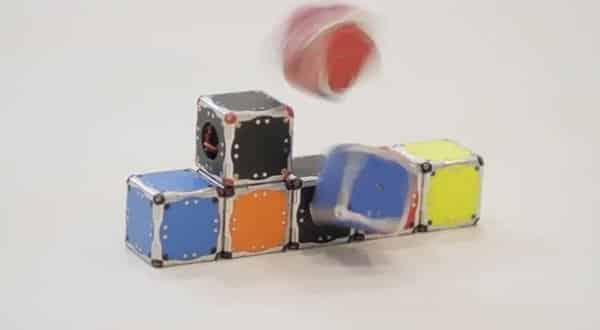Now a days, robots are being used in almost all sectors of life. But the common lacking of them is they can’t self-assemble themselves. But lately, MIT scientists have created modular robot cubes/blocks that can self-assemble and reconfigure.
The cubes/blocks are called M-Blocks. These M-blocks are able to climb over and around one another, leap through the air, roll across the ground, and even move while suspended upside down from metallic surfaces. Inside each M-Block is a flywheel that can reach speeds of 20,000 revolutions per minute. When the flywheel is braked, it imparts its angular momentum to the cube. On each edge of an M-Block, and on every face, are cleverly arranged permanent magnets that allow any two cubes to attach to each other. In simple words, these adorable cubes can connect to build modular machines.
According to Daniela Rus, a professor of electrical engineering and computer science and director of CSAIL, “Our objective is to design self-assembling and self-reconfiguring robot systems. These are modular robots with the ability of changing their geometry according to task and this is exciting because a robot designed for a single task has a fixed architecture. And that robot will perform a single task well but it will perform poorly on a different task in a different environment.”
Here’a video of the MIT’s self-assembling robotic cubes.
Source: MIT
[ttjad keyword=”electronic”]



